19 volcanoes around the world that could erupt at any moment
Ready to blow
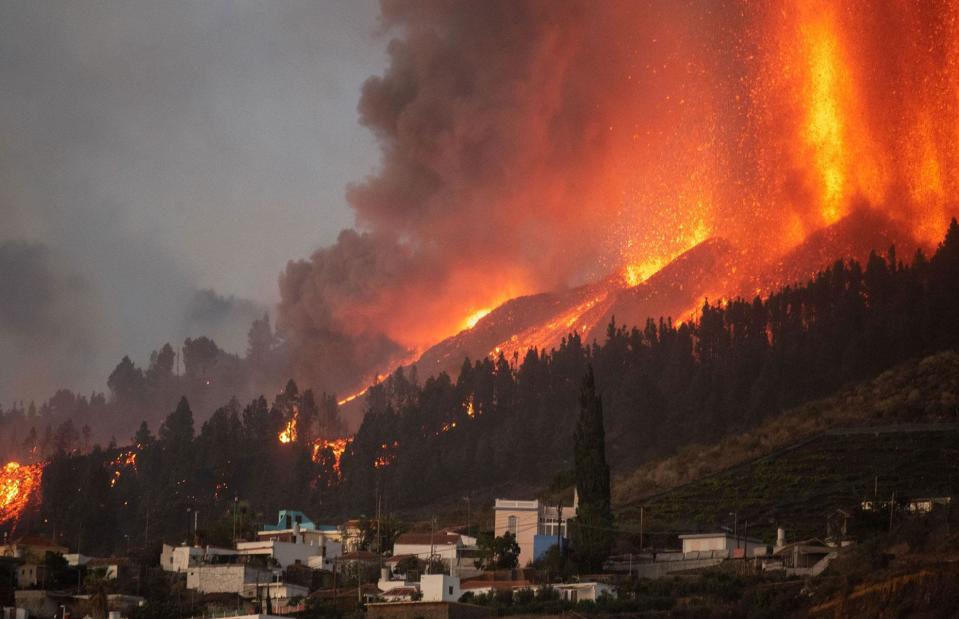
DESIREE MARTIN/Contributor/Getty
Did you know there are at least 1,350 active volcanoes around the world, and roughly 20 active volcanic eruptions on any given day? While many of them occur deep under the ocean – most volcanoes are found at the edges of the Pacific Plate, a horseshoe-shaped zone known as the Ring of Fire – occasionally violent outbursts of smoke, ash and lava happen on land and cause catastrophic damage and kill anyone in their path.
Read on for more about the world's deadliest volcanoes...
Mount Marapi, Indonesia
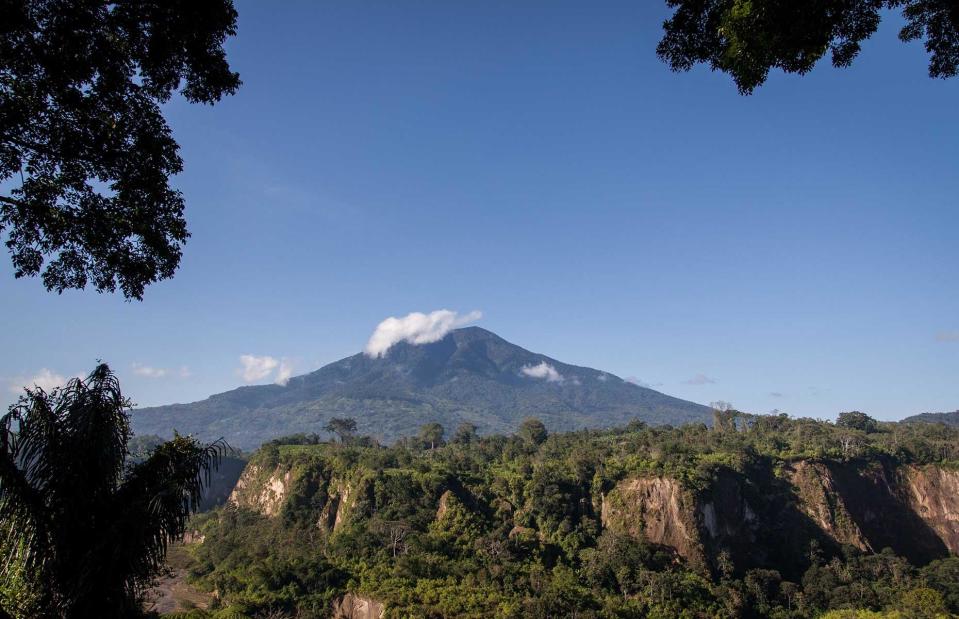
Antony Ratcliffe / Alamy Stock Photo
The majestic Mount Marapi, whose name means 'Mountain of Fire', can be found in West Sumatra, Indonesia, and stands at an elevation of 9,485 feet (2,891m). Its deadliest eruption was in April 1979, when 60 people died.
However, the volcano has now erupted once more, leading to more tragic deaths...
Mount Marapi, Indonesia
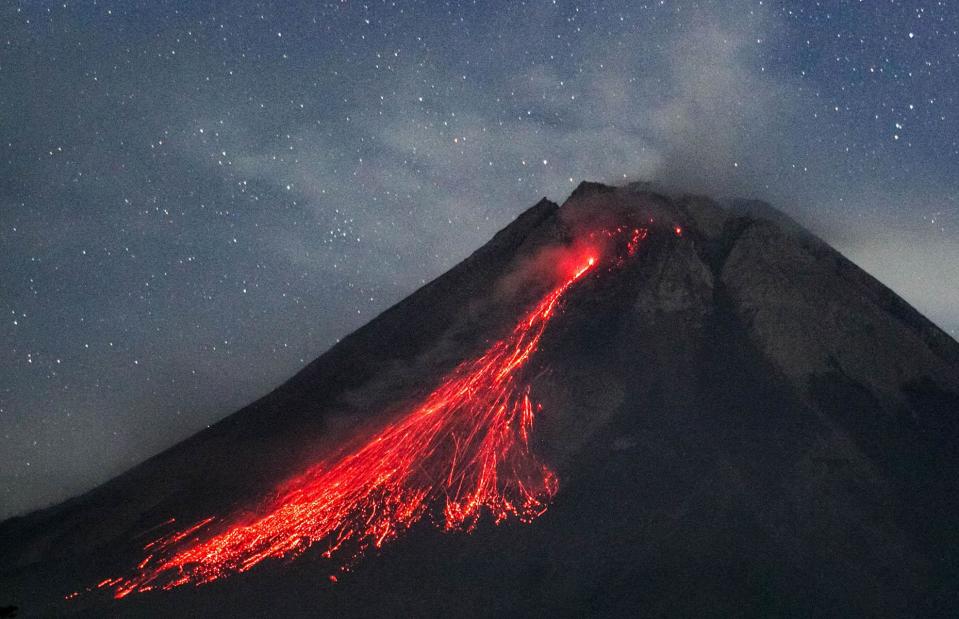
DEVI RAHMAN/AFP via Getty Images
On 3 December 2023, Mount Marapi erupted. Dozens of hikers were on the volcano at the time, with 23 people dead or presumed dead so far. As many as 75 people, including climbers, were evacuated from the area early on 4 December, with many treated for burns.
Those living on the slopes were advised to stay 1.8 miles (3km) away from the crater's edge for fear of potential lava flow.
Now read on for more incredible tales about the most significant volcanic eruptions in the last decade...
Lascar, Chile
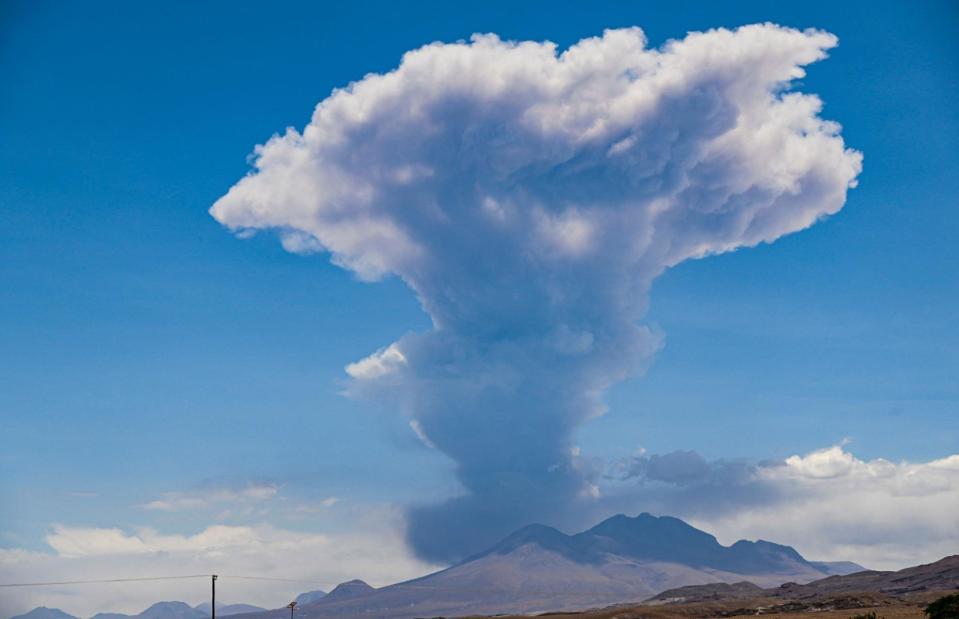
PEDRO TAPIA/AFP via Getty Images
The most active volcano in the northern Chilean Andes, Lascar is a stratovolcano made up of six overlapping craters, with a summit of 18,346 feet (5,592m). The mighty peak has had frequent small-to-moderate eruptions throughout the last few centuries, but until very recently it hadn't had a major eruption for almost 30 years.
On 11 December 2022, the volcano rumbled back to life, sending a plume of ash and smoke some 20,000 feet (6,000m) into the atmosphere.
Lascar, Chile
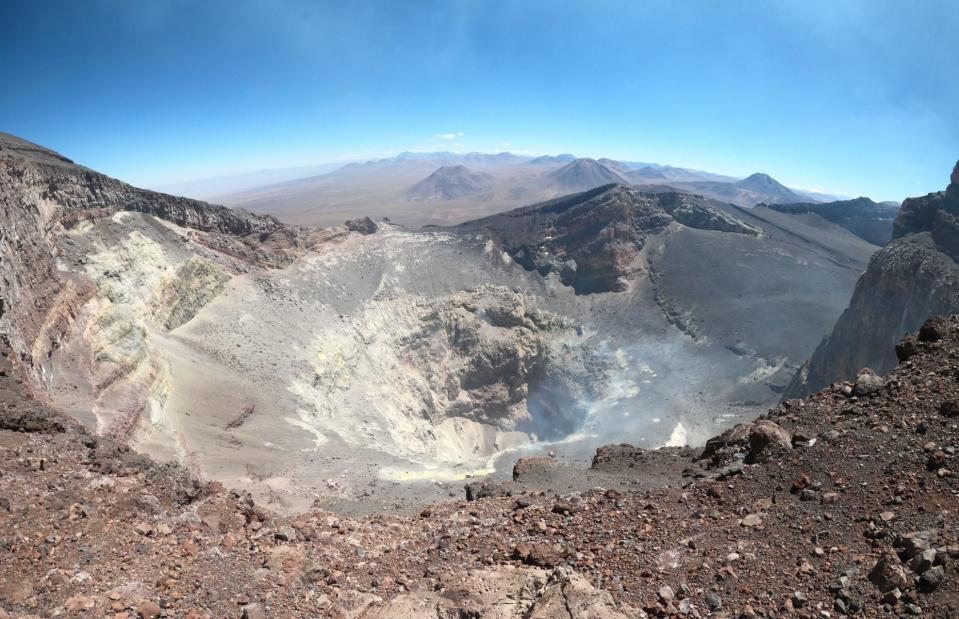
Monteiro 86/Shutterstock
The explosion, which was initially given a green warning by Chile's National Geology and Mining Service, was recently upgraded to a yellow alert level, which means the volcano is unstable. While surrounding areas are yet to record any damage, authorities have created a no-entry perimeter three miles (5km) around the peak.
Mauna Loa, Hawaii
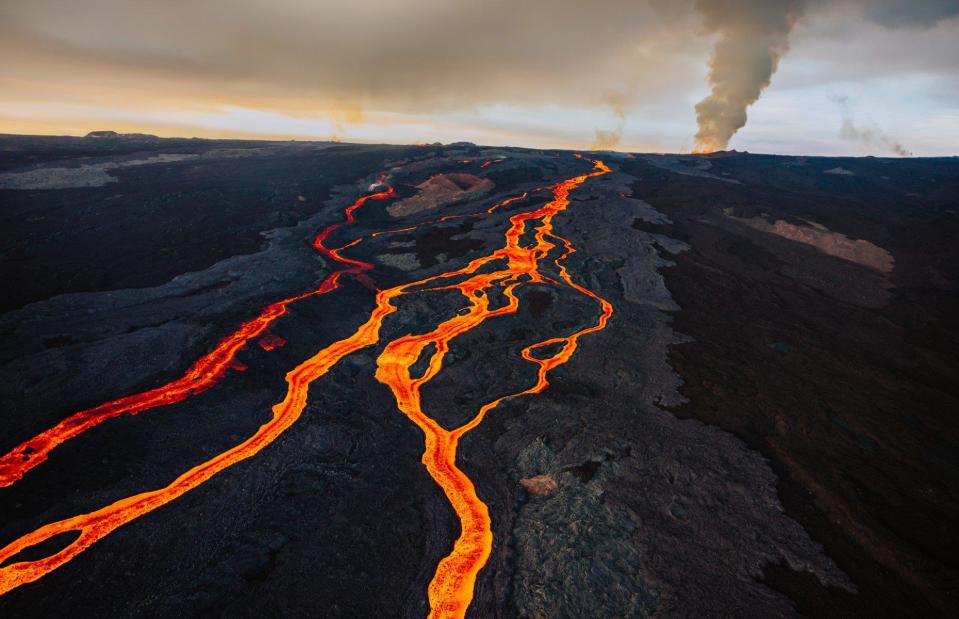
Andrew Richard Hara/Getty Images
After a series of recent earthquakes at its summit, Mauna Loa, the world's largest volcano – and the most active – has erupted for the first time in 38 years. The peak, which lies within Hawaii Volcanoes National Park on the Island of Hawaii, rises up 13,677 feet (4,169m) above sea level and around 3,100 feet (945m) below sea level, making up half the area of the Island of Hawaii.
The volcano has erupted almost 40 times since 1832.
Mauna Loa, Hawaii
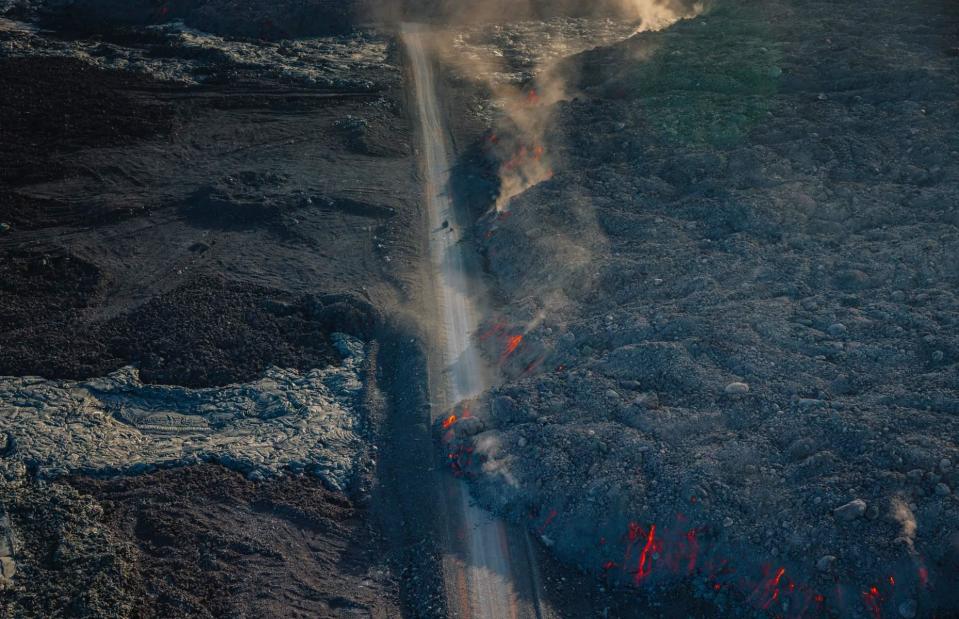
Andrew Richard Hara/Getty Images
As these shocking aerial images show, the rivers of lava emitting from the peak have begun to block roads and major infrastructure on the island – and experts say there's nothing that human intervention can do to stop it.
Stromboli, Italy
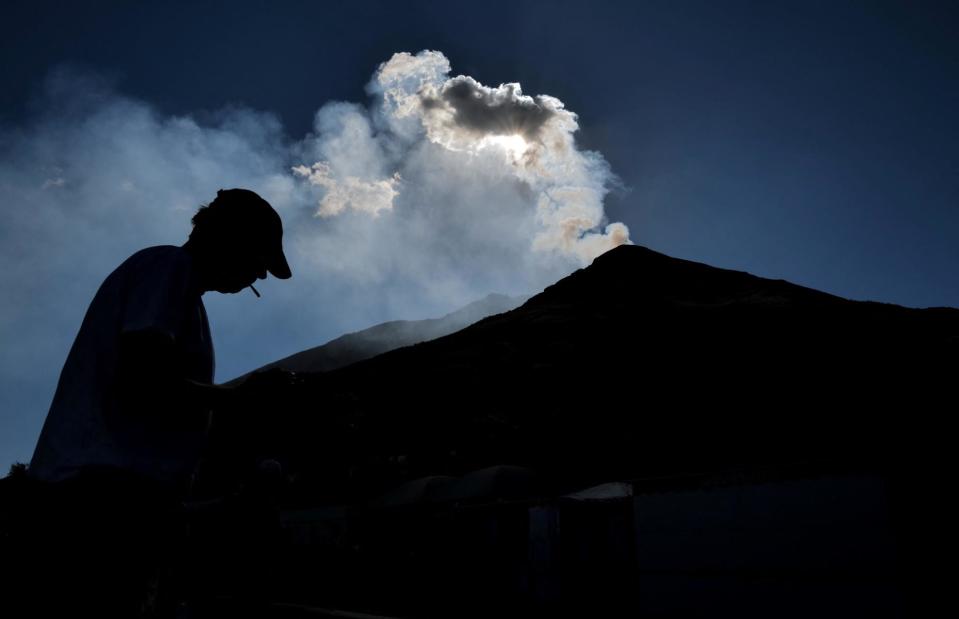
VALERY HACHE/AFP via Getty Images
Located on an island off the southern coast of Sicily, Stromboli is considered one of the most active volcanoes on Earth and has been erupting almost continuously since 1932 – earning it the nickname 'Lighthouse of the Mediterranean'. It stands at 3,031 feet (924m) above sea level and its eruptions usually occur in small, mild blasts.
Stromboli, Italy

VALERY HACHE/AFP via Getty Images
However, an explosion that was recorded on 9 October 2022 was anything but mild. In fact, it caused the partial collapse of volcanic material from the rim of the crater, leading to a three-minute-long seismic signal. Videos released by Italy's National Institute of Geophysics and Volcanology show massive plumes of smoke and lava flows coming from the peak.
Thankfully no one was harmed by the event, although a tourist was sadly killed by a powerful eruption here in 2019.
Mount Semeru, Indonesia
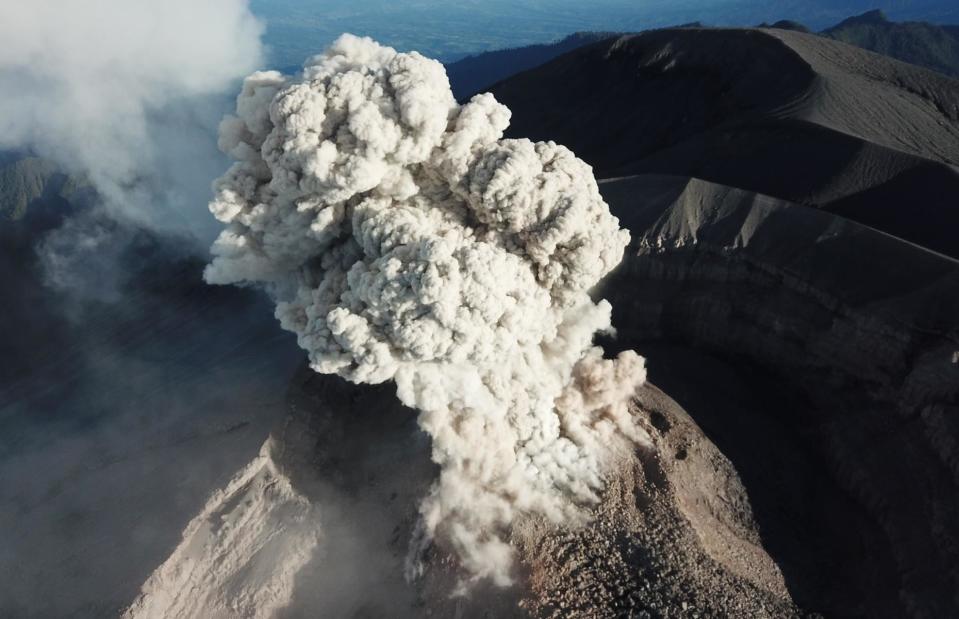
Rainer Albiez/Shutterstock
Mount Semeru, a 12,060-foot (3,676m) volcano on Java, Indonesia’s most populated island, has been continually active since 1967 and is extremely hazardous. The current eruption has been continuing since 2014 and on 4 December 2021 a major ash plume caused ashfall, pyroclastic flows and mudflows that were responsible for the deaths of at least 48 people.
According to the head of Indonesia’s geological agency, the eruption was caused by heavy rainfall on the lip of Semeru’s crater, which led to its partial collapse.
Eyjafjallajökull, Iceland
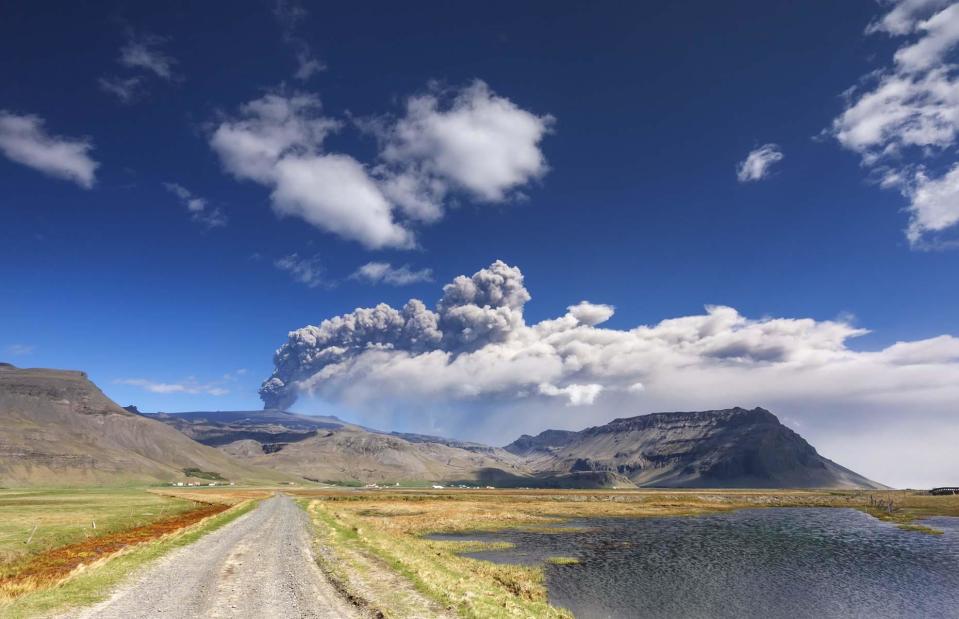
Mateusz Liberra/Shutterstock
In 2010, newsreaders around the world struggled to pronounce the name of the Icelandic glacier volcano that brought air traffic in Europe to a standstill. Eyjafjallajökull belched out huge ash clouds that hung in the air for more than six days and made air travel across Europe near impossible.
Eyjafjallajökull, Iceland
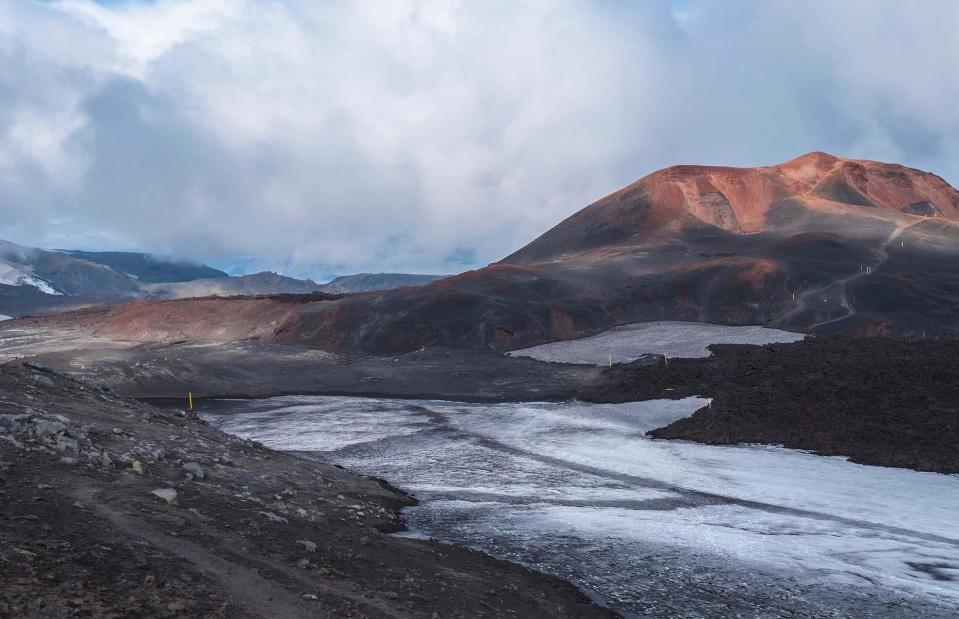
Kristyna Henkeova/Shutterstock
Although it’s too dangerous to walk on the ice cap that covers the caldera of the volcano, the 2010 eruption wasn't too violent. This means hikers have been keen to explore the rocky terrain on the 15-mile (25km) Fimmvörðuháls ridge hike.
Snaking between the Eyjafjallajökull and Mýrdalsjökull glaciers, craters and lava flow formed by the 2010 eruption, it's equally intimidating and gorgeous.
Anak Krakatoa, Indonesia
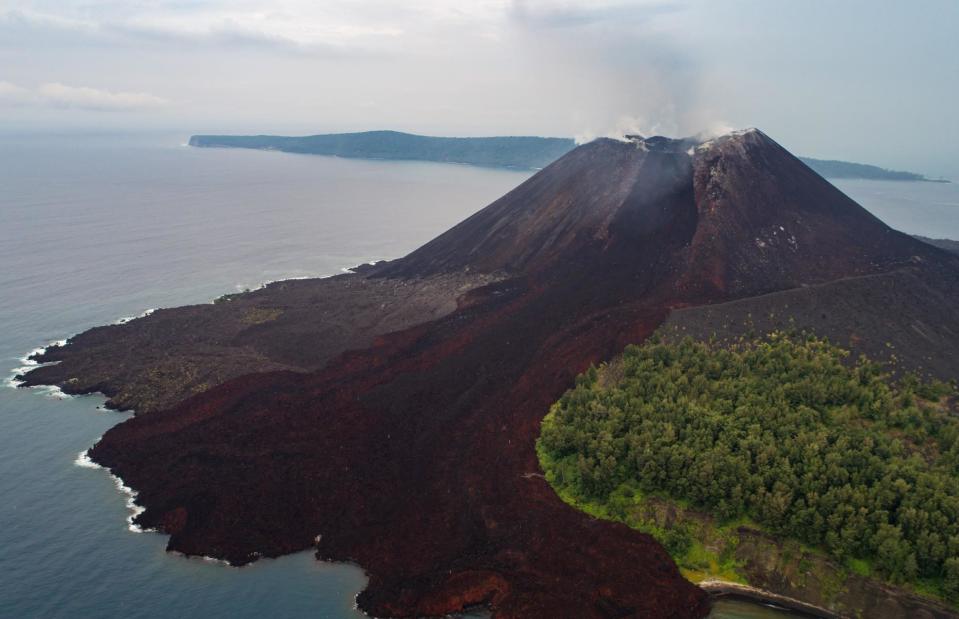
The Wild Eyed/Shutterstock
One of the biggest volcanic eruptions in recorded history happened in 1883 in the Sunda Strait between the islands of Java and Sumatra. The island of Krakatoa was destroyed and an ash cloud entered the atmosphere and circled the world. Anak Krakatoa, meaning the 'child of Krakatoa', is a cinder cone volcano formed inside the original Krakatoa caldera.
It only appeared in 1927 and as a young volcano it's of huge interest to scientists.
Anak Krakatoa, Indonesia
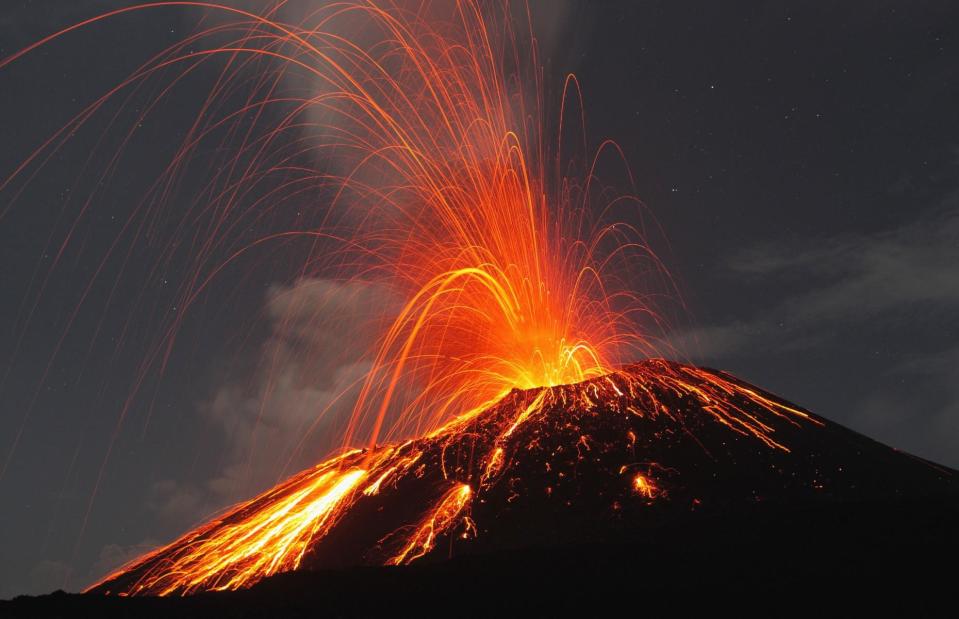
Westend61 GmbH/Alamy Stock Photo
Since the end of the 20th century there has been sporadic volcanic activity at Anak Krakatoa, including in 2010 (pictured). But in June 2018 a new and more problematic eruptive phase was observed and on 22 December that year it erupted.
A huge part of the volcano collapsed and caused a tsunami that killed 426 people, with more than 7,000 injured.
Kīlauea, Big Island, Hawaii, USA
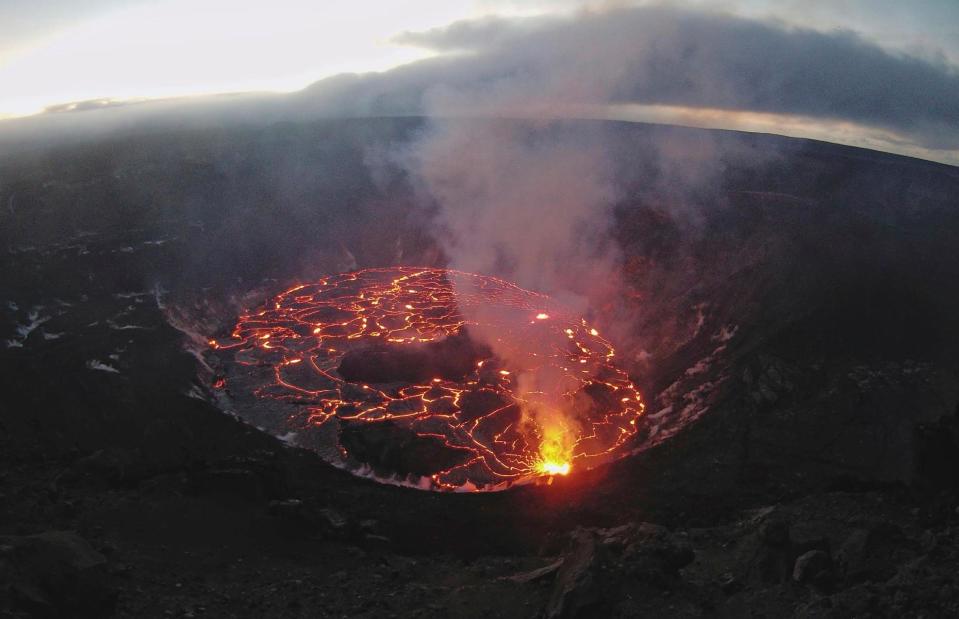
USGS/Alamy Stock Photo
Kilauea is in the southeast of Big Island and is the most active volcano in the world. Its most active vent is Halema‘uma‘u, the legendary home of Pele, the Hawaiian fire goddess.
It's been 200 years since its last explosive eruptions (scores of deaths occurred here in 1790) and in recent years eruptions are usually contained by the lava lake within the crater.
Kīlauea, Big Island, Hawaii, USA
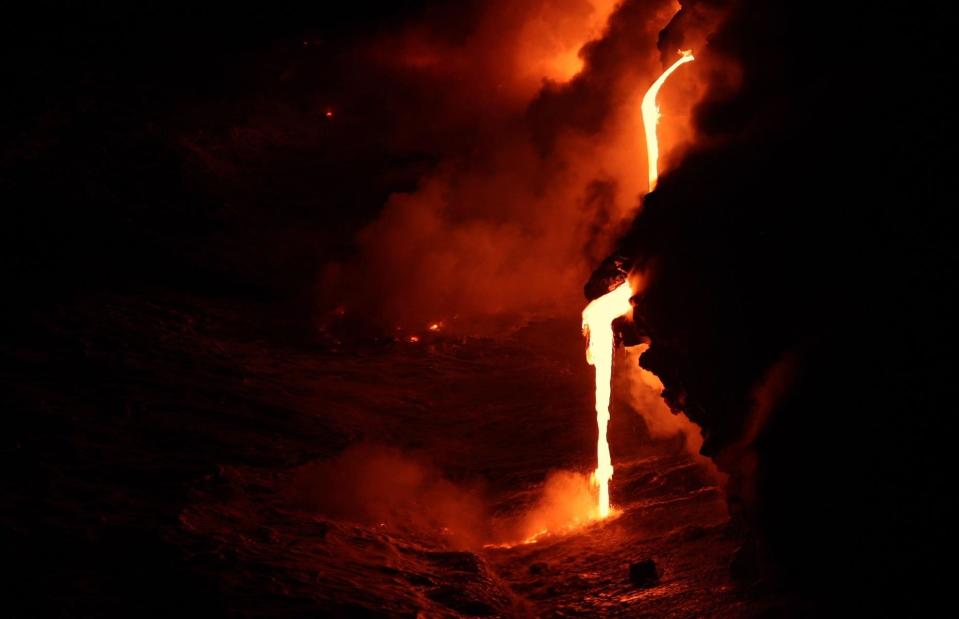
Maridav/Alamy Stock Photo
That all changed in 2018, when a series of eruptions between May and August devastated residential areas in the Lower East Rift Zone and molten lava poured into the ocean at Kapoho Bay. Another eruption began in December 2020 with a new lava lake and lava flows, but for the time being all lava activity is contained within the Halema‘uma‘u crater.
Daily status updates are available from the US Geological Survey.
White Island (Whakaari), New Zealand
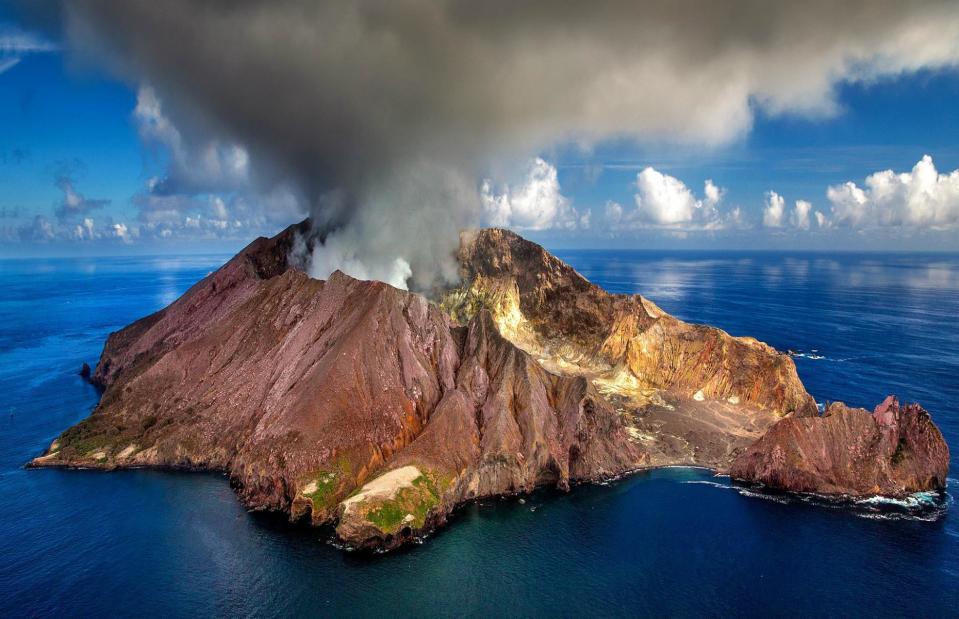
Julius_Silver/Pixabay
Just 30 miles (48km) off of the coast of New Zealand’s North Island, in the Bay of Plenty, White Island (Whakaari to the Māori) is a grumbling volcanic island of billowing steam. About 70% of the volcano is actually below sea level so what you see exposed is the peak and crater lake. The rock's yellow tinge is from the sulphur.
White Island (Whakaari), New Zealand
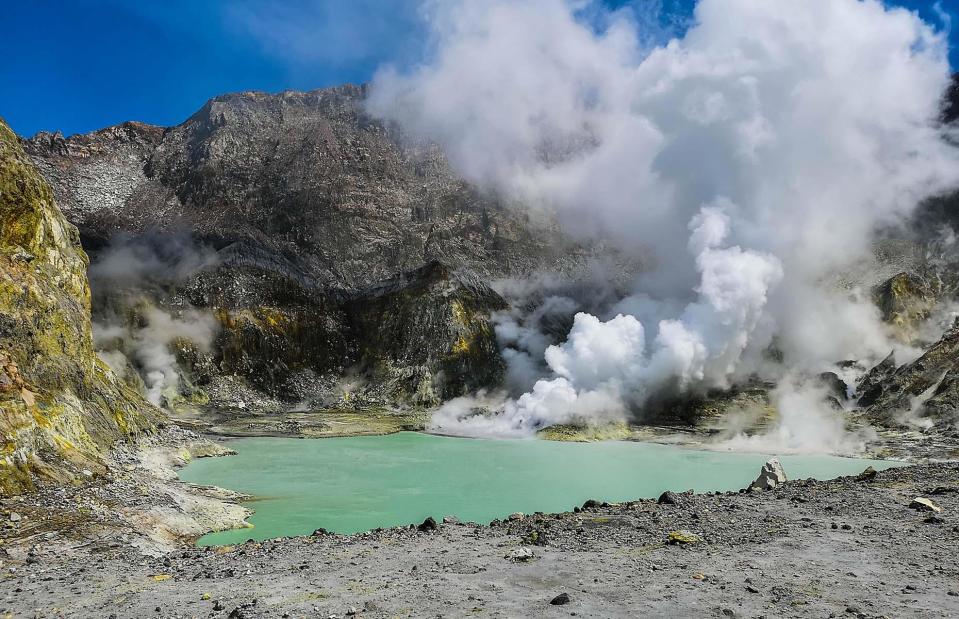
Francesca Taylor/Shutterstock
Once a popular day trip destination, it's no longer possible to set foot on White Island/Whakaari as in 2019 there was a major eruption and 22 people, mostly travellers, lost their lives. It was New Zealand's deadliest volcanic disaster since the 1886 eruption of Mount Tarawera.
Since the tragic event, the volcanic activity has declined, limited to white gas-and-steam emissions.
Mount Sinabung, Indonesia
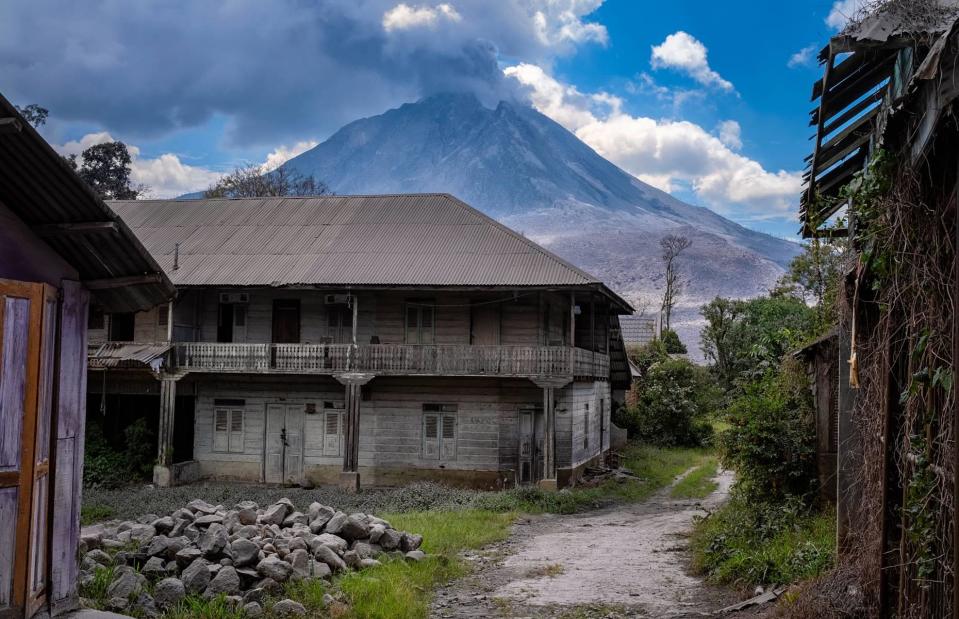
PLOO Galary/Shutterstock
Located in North Sumatra along the Ring of Fire, the 8,530-foot (2,600m) high Mount Sinabung had been dormant for more than 400 years before it broke its quiet spell in 2010. Since then, there have been several major blasts, and in 2014, 16 people died after authorities allowed evacuated residents to return to their homes prematurely.
Mount Sinabung, Indonesia
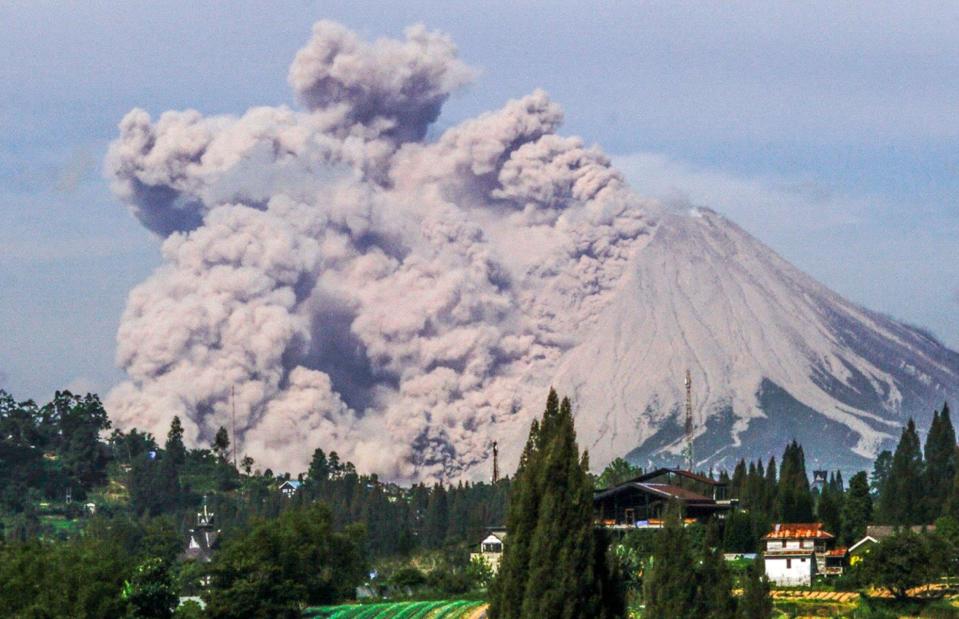
SUGENG NURYONO/AFP via Getty Images
On 2 March 2021, the fearsome volcano spewed an enormous ash cloud as far as three miles (5km) into the sky, its first major eruption since the previous August, when it was placed on the second-highest alert level. Activity continued from April to June and then again in August 2021, when gas-and-steam plumes were observed, as well as lava avalanches.
Scientists have once again set up a 1.2-mile (2km) exclusion zone.
Piton de la Fournaise, Réunion, France
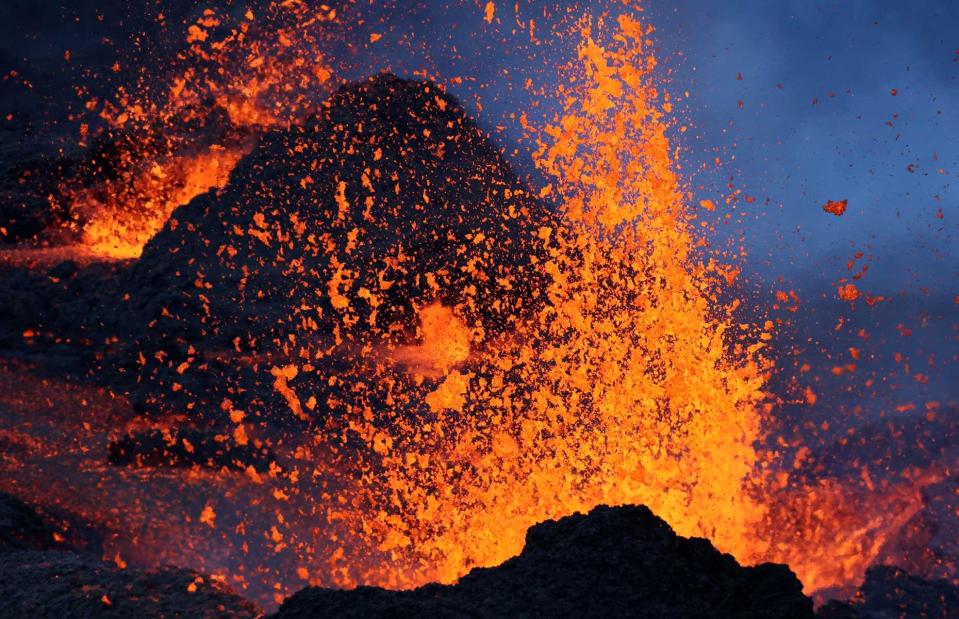
RICHARD BOUHET/AFP via Getty Images
Located around 140 miles (226km) from Mauritius, the island of Réunion is home to the Piton de la Fournaise (in English, Peak of the Furnace) volcano, which at 8,635 feet (2,632m) is the highest in the Indian Ocean. Réunion’s most visited attraction, it is also one of the world's most active volcanoes, erupting on average once every nine months.
Piton de la Fournaise, Réunion, France
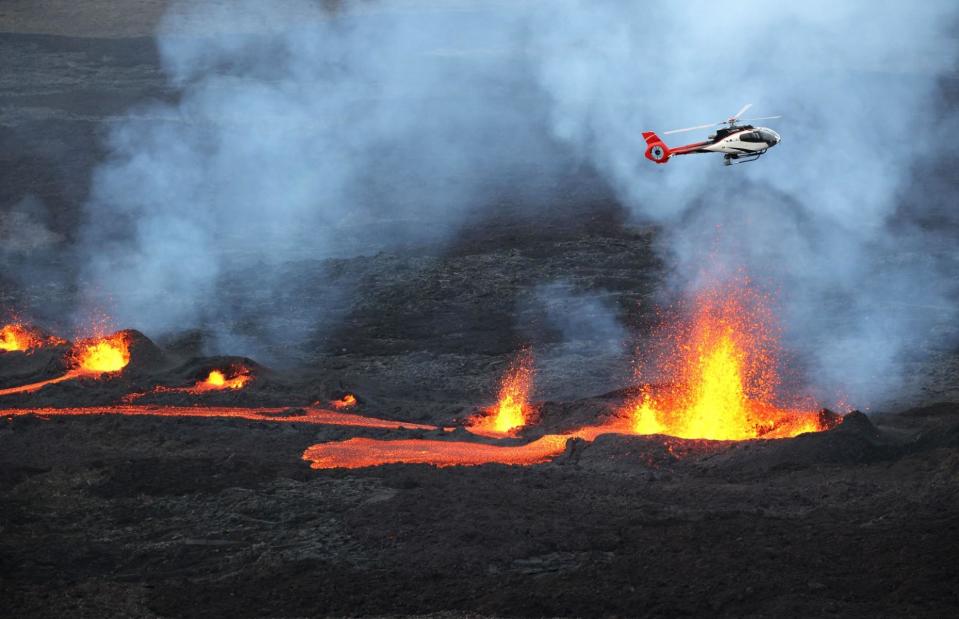
RICHARD BOUHET/AFP via Getty Images
The latest seismic activity was January to April 2021, with an explosive episode on the south side on 10 April 2021. Active lava fountains and gas and steam erupted from fissures and a single lava flow advanced throughout April.
The eruption was still active in January 2022.
La Soufrière, Saint Vincent, Saint Vincent and the Grenadines
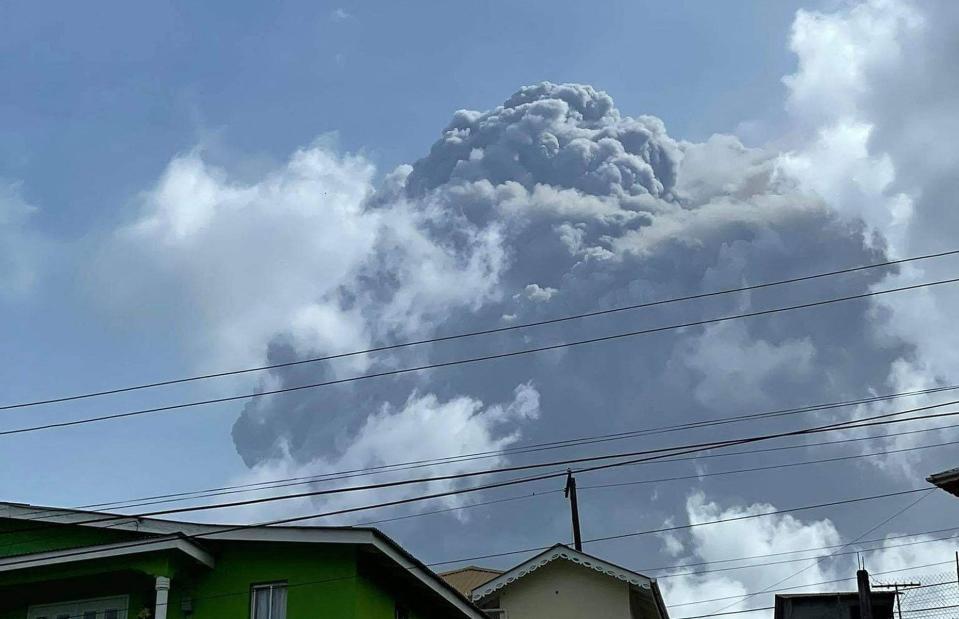
ZEN PUNNETT/Zen Punnett/AFP via Getty Images
The normally bright skies of the island of Saint Vincent and its Caribbean neighbours turned a murky grey when La Soufrière erupted on Friday 9 April 2021. It was the first activity from the volcano in 40 years and only the fifth big event since records started in 1718. The ash cloud reached 20,000 feet (6,000m) and saw residents in the immediate area evacuated.
La Soufrière, Saint Vincent, Saint Vincent and the Grenadines
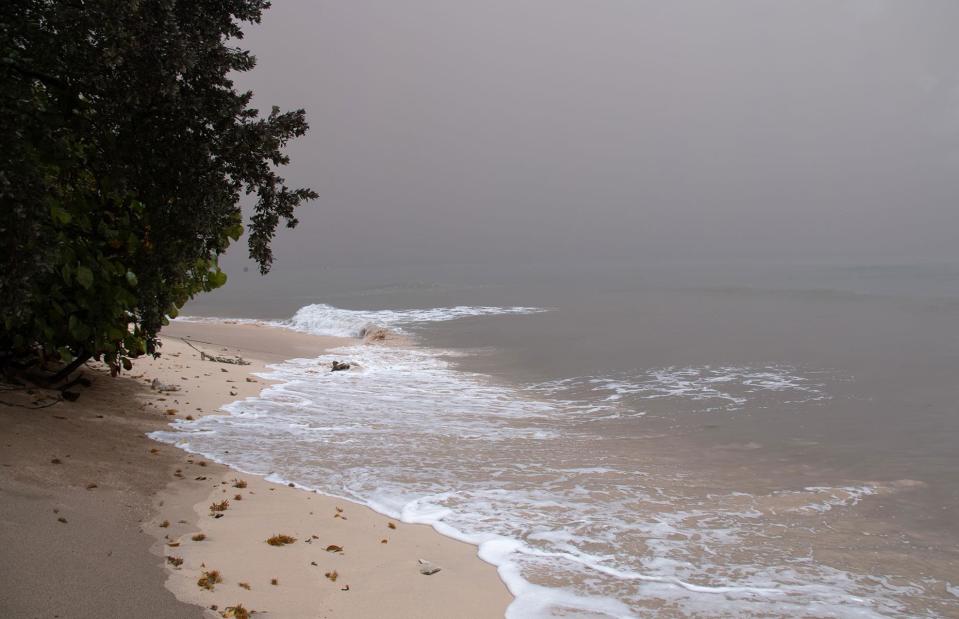
Jade PM/Shutterstock
A strong stench of sulphur engulfed the island, while the ash cloud caused a blanket of gloomy grey to loom over both Saint Vincent and the Grenadines and neighbouring Barbados (pictured), around 120 miles (193km) to the east. Two further eruptions later in the day on 9 April added to the poor visibility.
No casualties were reported but up to 20,000 people were evacuated and it was months before some could return to their homes.
Mount Nyiragongo, Democratic Republic of the Congo
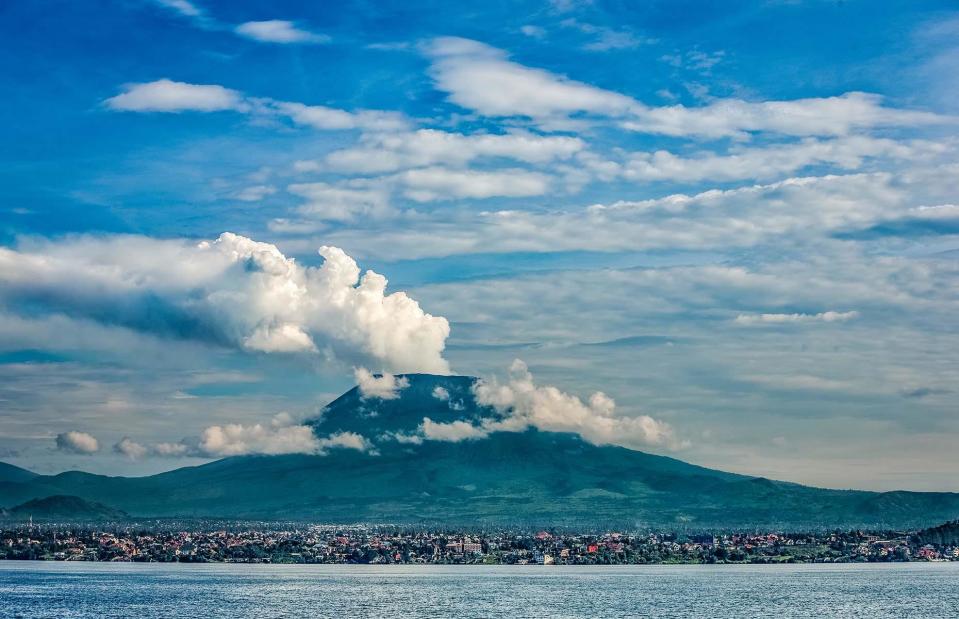
Ben Houdijk/Shutterstock
The 3,000-square-mile (7,770sq km) Virunga National Park in the Democratic Republic of the Congo is Africa's oldest park and home to a quarter of the world’s critically endangered mountain gorillas. At the very top of Mount Nyiragongo is the world’s largest lava lake, a churning molten red lake of fire.
Mount Nyiragongo, Democratic Republic of the Congo
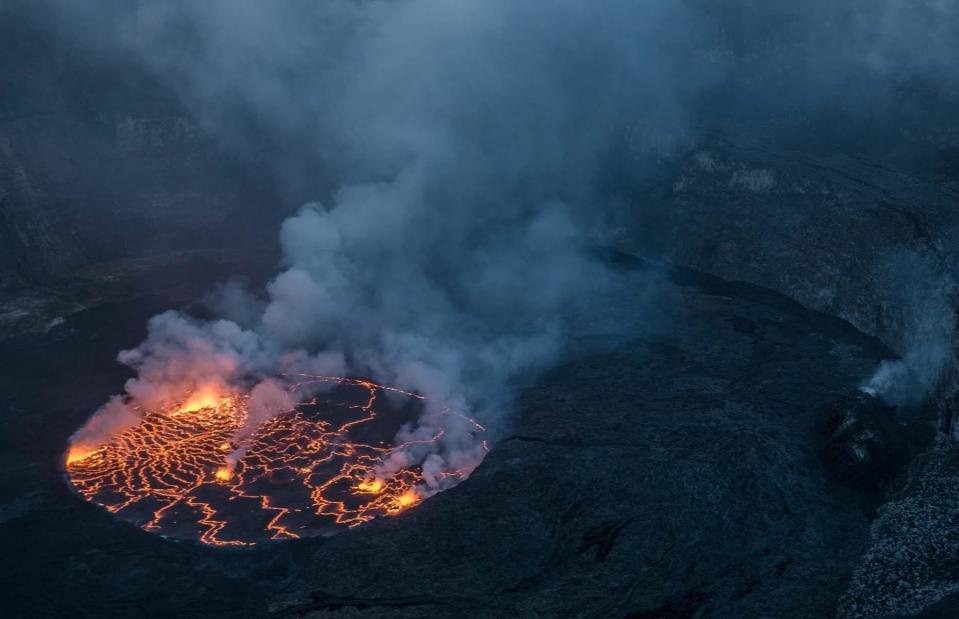
Dario Verdugo/Shutterstock
The unusual fluidity of the lava makes it all the more dangerous to the people living in the shadow of the volcano – more than 200 people were killed and 120,000 left homeless in a devastating eruption in 2002 when basalt lava poured into the city of Goma at 37 miles per hour (60km/h).
Mount Nyiragongo, Democratic Republic of the Congo
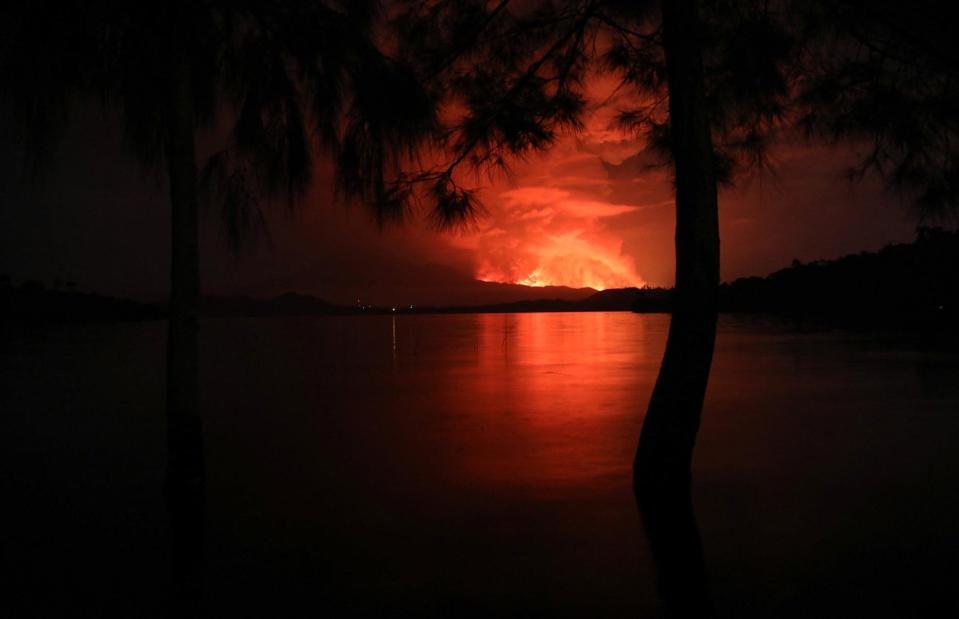
ALEX MILES/AFP via Getty Images
On 22 May 2021, Nyiragongo abruptly erupted again, this time taking the lives of at least 31 people. Nyiragongo caused an ongoing humanitarian crisis with Médecins Sans Frontières (MSF) reporting that around 500,000 people were left without clean drinking water, partly as a result of damage to pipes and water reserves during the eruption.
Thousands of households were evacuated to makeshift camps, and many were unable to return to their homes for months after the disaster. In December 2021 and January 2022, the lava lake was reported to be growing and rumbling was audible.
Pacaya, Guatemala
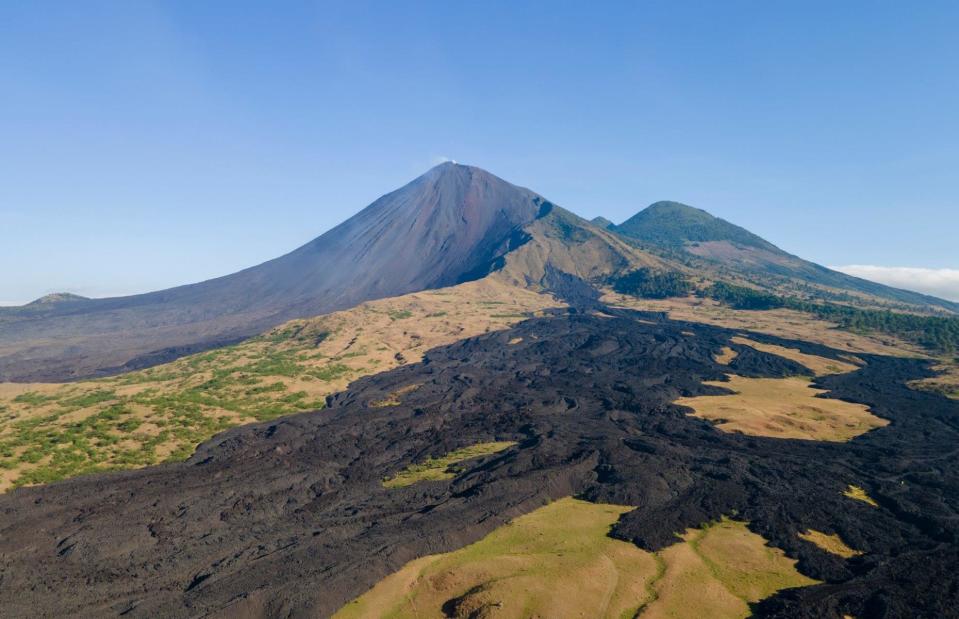
Bill Lara Alb/Shutterstock
Pacaya is one of the most active volcanoes in Guatemala, located roughly 31 miles (50km) south of Guatemala City. Despite its high activity level, the 8,373-foot (2,552m) peak is popular with hikers when it's safe to visit, but that doesn't happen often...
Pacaya, Guatemala
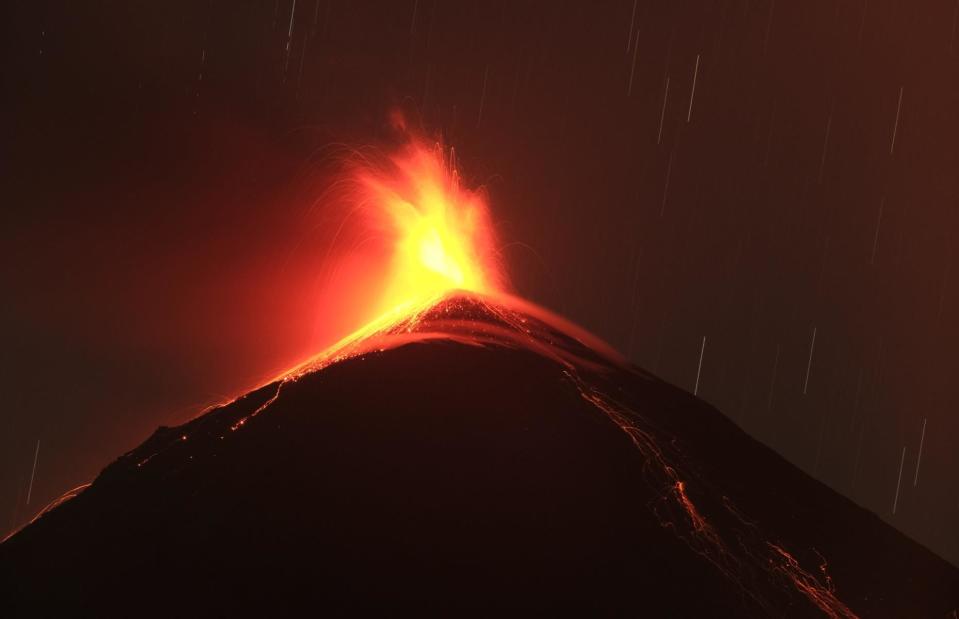
Josue Decavele/Getty Images
In May 2010 two local villagers and a reporter were killed and 100 homes were destroyed, when the Guatemalan giant spewed lava, rocks and debris. There were more major eruptive events in 2020 and 2021 too, when eruptions were characterised as strombolian, which means the blasts themselves were relatively tame, but they threw out bombs of lava and burning cinders.
Since then, sporadic ashfall was reported in May, June and August of 2021, with gas-and-steam emissions in August too.
Cumbre Vieja, La Palma, Canary Islands, Spain
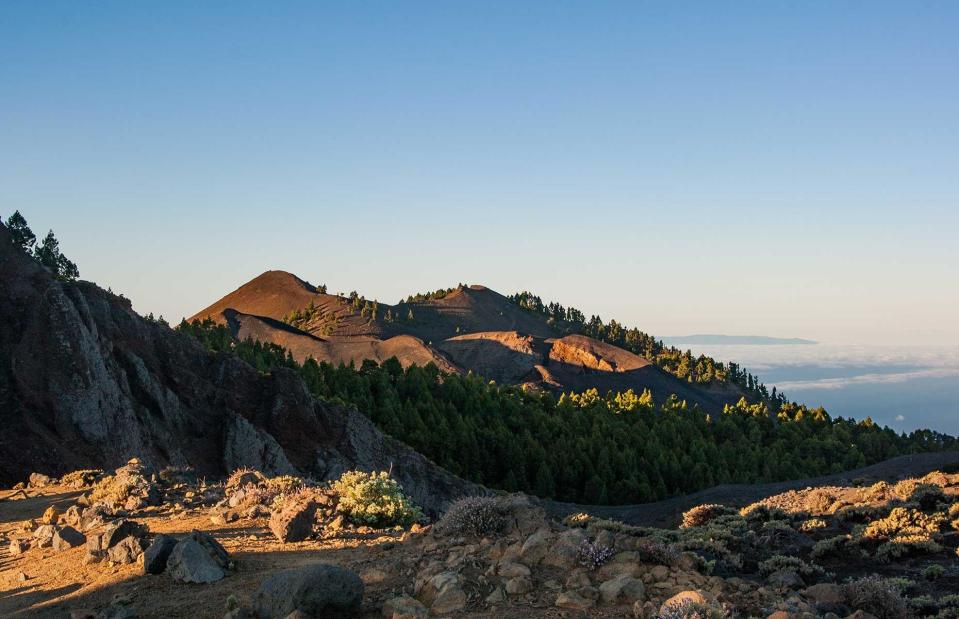
Masi Perez/Shutterstock
One of Spain's Canary Islands, located off northern Africa's west coast, La Palma is known for its volcanic landscape. Usually Cumbre Vieja, a mountain range and volcano set in a park of the same name, is a top attraction for hikers.
But after several earthquakes in mid-September 2021, the volcano erupted for the first time since the 1970s on 19 September, spewing lava into the air and down hillsides, and emitting columns of smoke and ash.
Cumbre Vieja, La Palma, Canary Islands, Spain
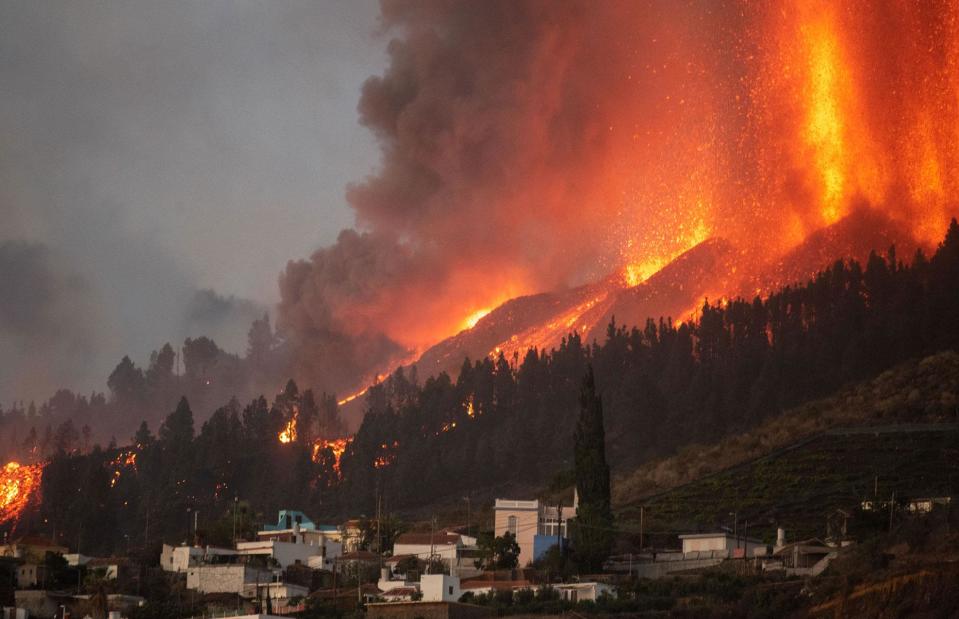
DESIREE MARTIN/Contributor/Getty
Around 3,000 buildings were destroyed and more than 5,500 hectares of land were affected, including banana plantations which are vital to the island's economy. A total of 6,000 people were temporarily evacuated as rivers of molten lava flowed out towards the ocean and scientists estimated that the volcano erupted more than double the amount of molten rock than during its last eruption in 1971.
Cumbre Vieja, La Palma, Canary Islands, Spain
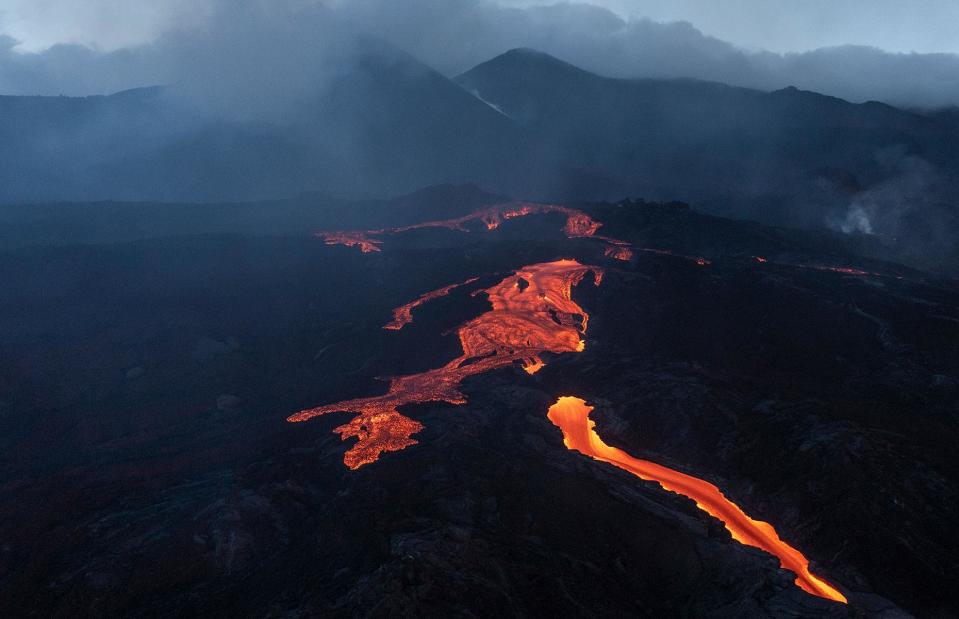
Dan Kitwood/Staff/Getty
Sulphur and carbon dioxide emissions turned the crater yellow, orange and white and new volcanic vents opened up, sending more lava flows down the mountain. Despite the damage to property and the land, thankfully there were no deaths or injuries directly linked to the eruptions.
Cumbre Vieja, La Palma, Canary Islands, Spain
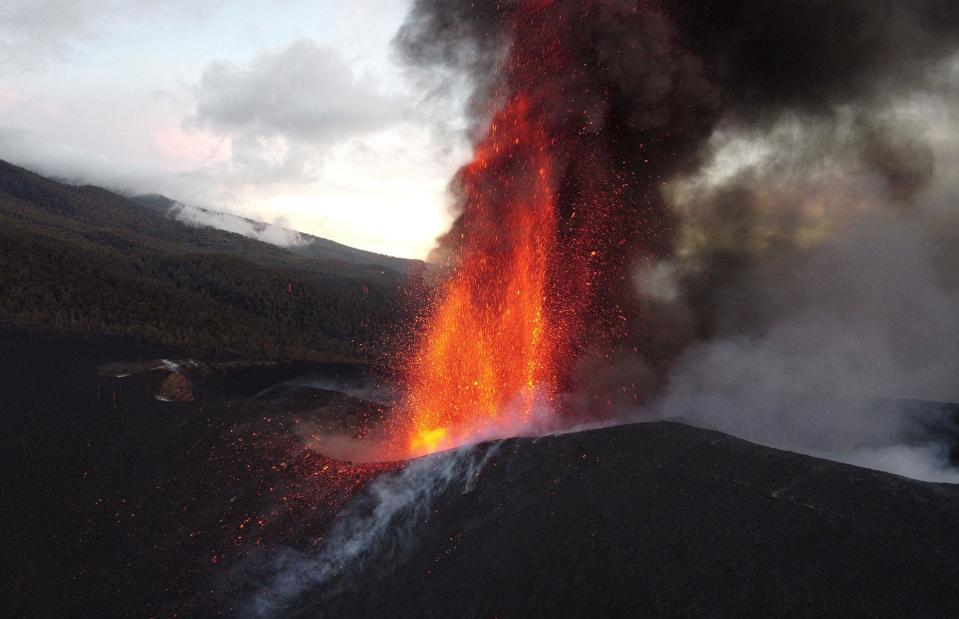
VICTOR SVENSSON/Contributor/Getty
Volcanic activity lasted 85 days and is thought to be the most devastating eruption in Europe in 80 years. While most of the island was unaffected, those living in the vicinity of Cumbre Vieja endured tremors, poor air quality and ash clouds until Christmas Day 2021, when it was officially announced that the eruption was over.
Wolf Volcano, Galápagos, Ecuador
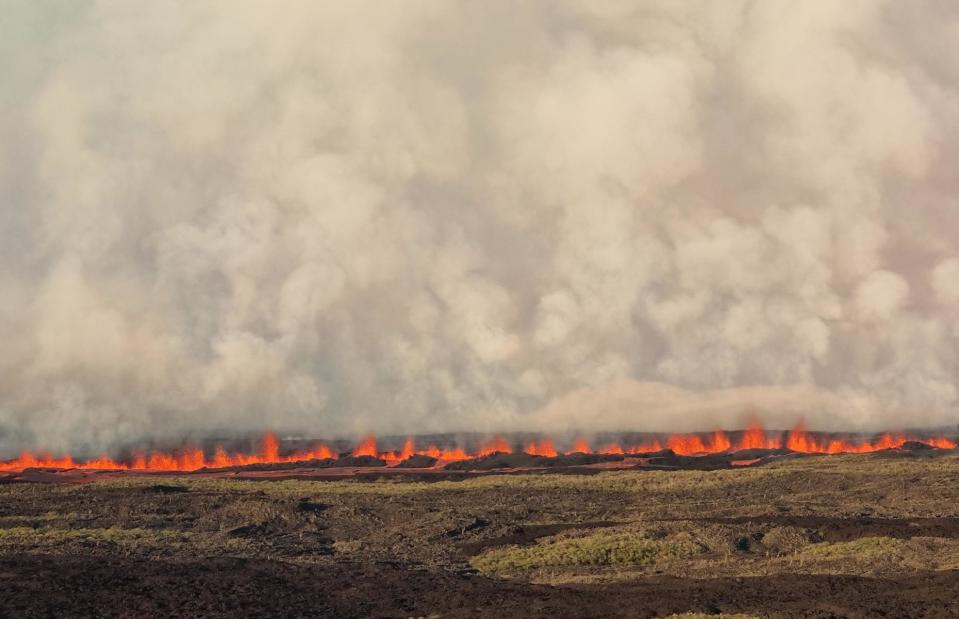
Wilson Cabrera/Parque Nacional Galapagos via Getty Images
After laying silent for more than three decades, in May 2015 the Galápagos’ Wolf Volcano sent clouds of ash and spewing lava into its surroundings. Luckily the Wolf Volcano is away from the main population centre on the island and also the lava flowed east and southeast rather than down the north slope, which is home to rare pink iguanas and giant tortoises.
Wolf Volcano, Galápagos, Ecuador
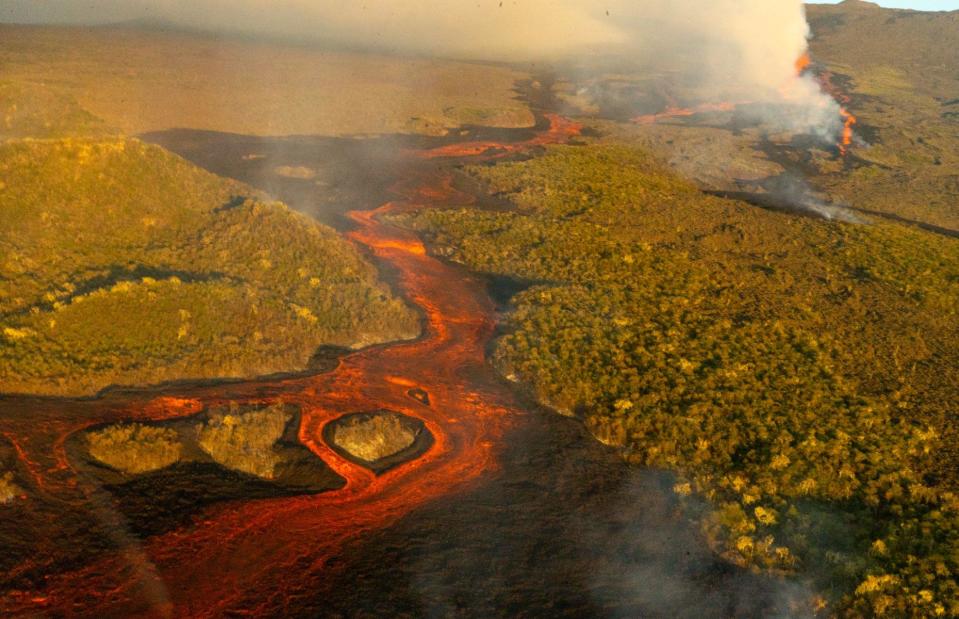
Wilson Cabrera/Parque Nacional Galapagos via Getty Images
The volcano erupted again in January 2022 when a colossal ash cloud rose more than 12,444 feet (3,793m) above sea level. Thankfully, no one was hurt in the eruption, although eight people working in the area were evacuated. Jaw-dropping aerial images captured a glowing orange river of lava slowly trickling into the ocean.
Hunga Tonga-Hunga Ha‘apai, Tonga
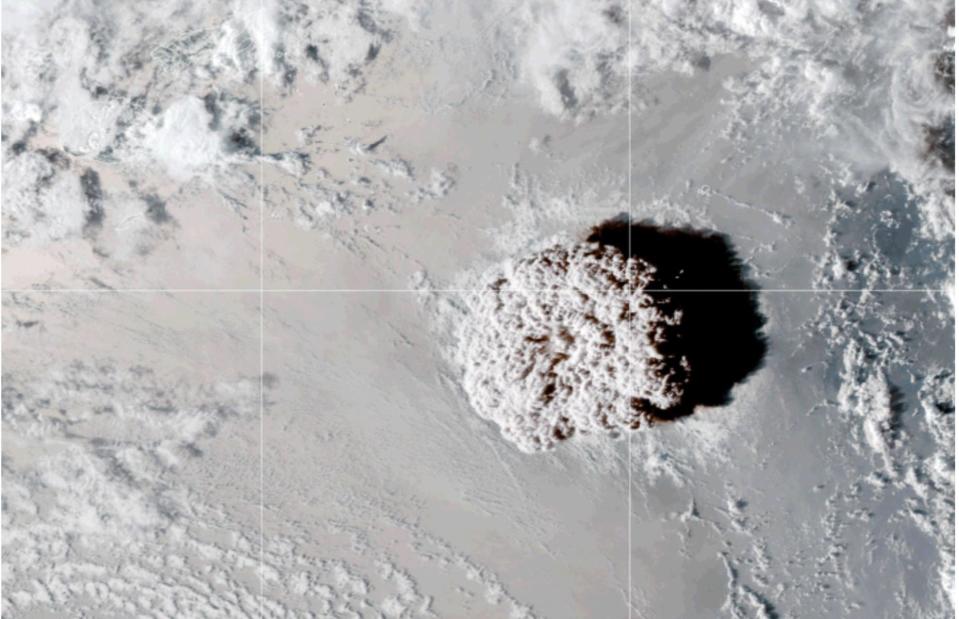
Sipa US/Alamy Stock Photo
This photo is a still capture of a video released by NASA when a small, uninhabited South Pacific island known as Hunga Tonga-Hunga Ha‘apai – originally two islands that became one landmass in January 2015 after an eruption formed new land between them – was obliterated by a massive volcanic eruption.
Little is understood about volcanoes that erupt in shallow water and volcanologists have been analysing the extraordinary power of the blast.
Hunga Tonga-Hunga Ha‘apai, Tonga
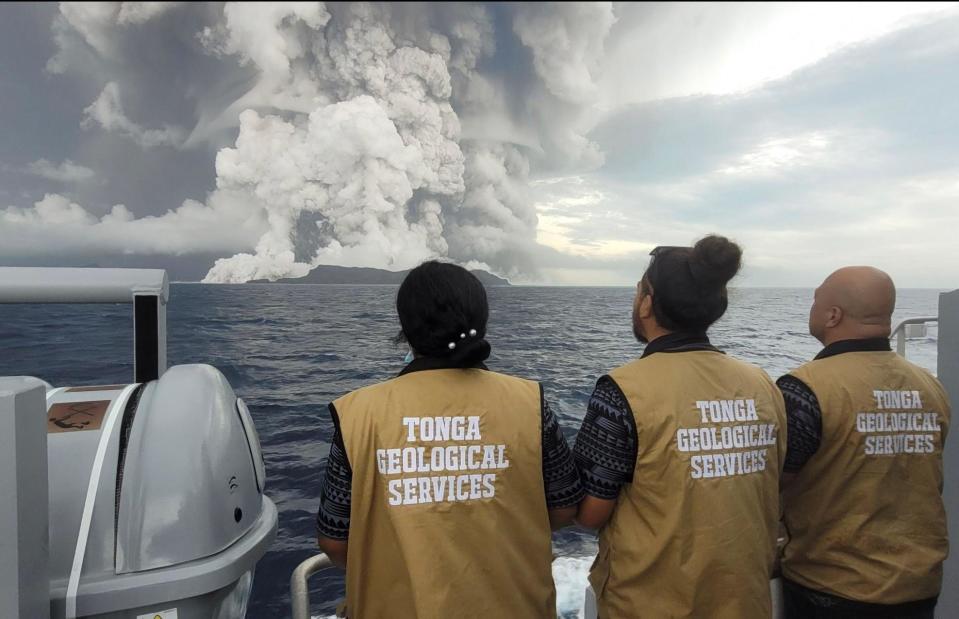
ZUMA Press, Inc./Alamy Stock Photo
Tonga Geological Services had been observing and monitoring Hunga Tonga–Hunga Ha‘apai since the eruption began on 20 December 2021, but it wasn't until 15 January 2022 that the climatic blast came, causing the largest volcanic eruption in the 21st century, with a blast so loud that it was heard 6,000 miles away in Alaska.
It triggered tsunamis in Tonga, Fiji, Samoa, Vanuatu, New Zealand, Japan, the US and South America, with new research revealing that the strength of the blast shot gas and ash 35 miles (56km) up into the mesosphere – that's halfway to space – with the force of the eruption equivalent to hundreds of atomic bombs. At least three people are known to have died and the island was left cut off from the world for more than a week.
Mount Etna, Sicily, Italy
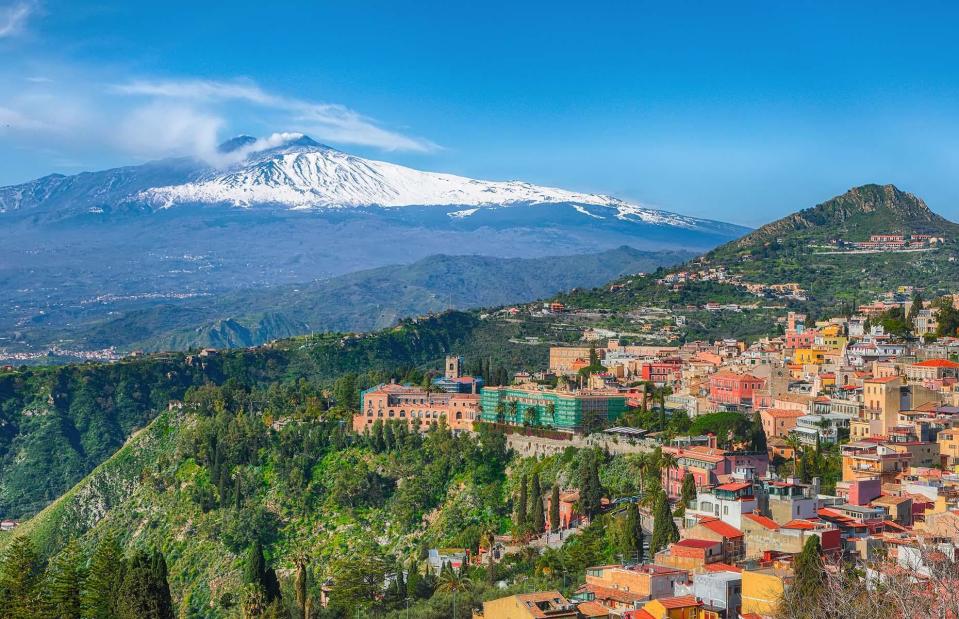
Vadym Lavra/Shutterstock
The highest active volcano in Europe, Mount Etna is a magnificent landmark in the northeast of the island of Sicily. Fiery Etna erupts several times a year and is actually a series of nested stratovolcanoes (conical volcanoes built up of layers of lava and ash) with four distinct summit craters.
Mount Etna, Sicily, Italy
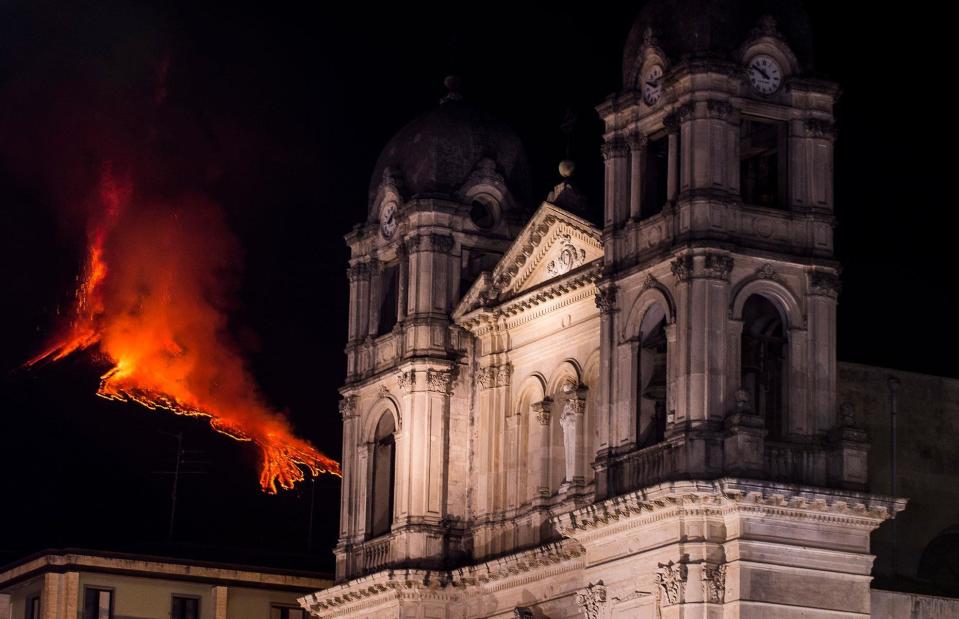
Fabrizio Villa/Getty Images
In February 2021, Etna began sporadically spewing hot lava into the sky and sending ash tumbling down onto nearby houses and cars. While residents weren't in any danger, authorities temporarily closed the airport in Catania due to small stones in the atmosphere.
Etna put on a monumental fireworks display and while the dust from the spectacle was disruptive, it offered the opportunity for some jaw-dropping photography, such as this shot of a Baroque church in the village of Zafferana Etnea.
Mount Etna, Sicily, Italy
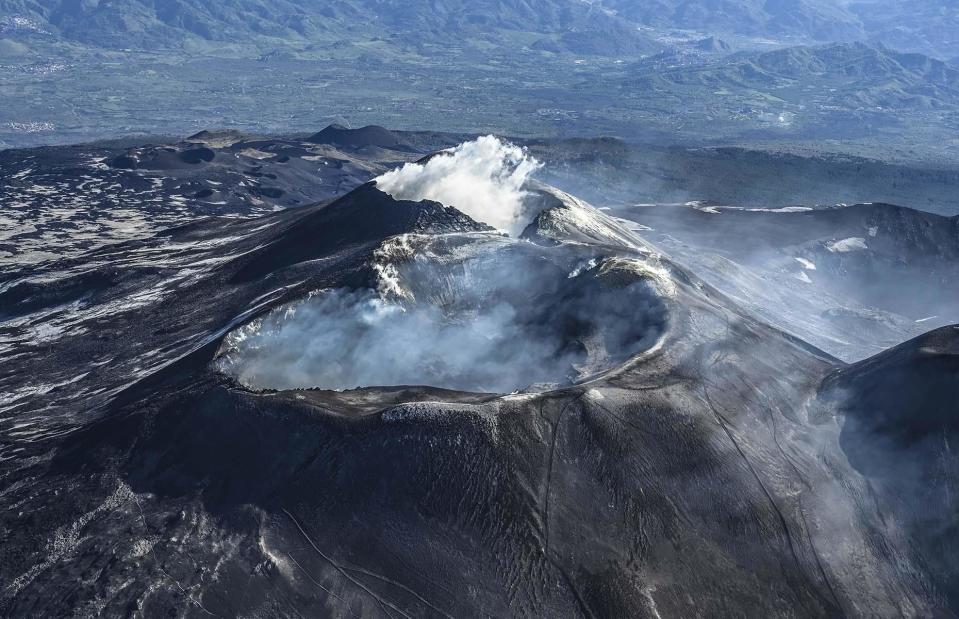
Fabrizio Villa/Getty Images
Data gathered by Italy's National Institute for Geophysics and Volcanology showed that as of August 2021, Europe's tallest volcano is now taller than ever. Analysis of satellite images revealed that Mount Etna's southeast crater has grown to a record 11,000 feet (3,357m) above sea level due to eruptions.
Around 50 episodes of activity were recorded in 2021 and the Sicilian government estimated that more than 300,000 tonnes of ash were cleaned up.
Mount Etna, Sicily, Italy
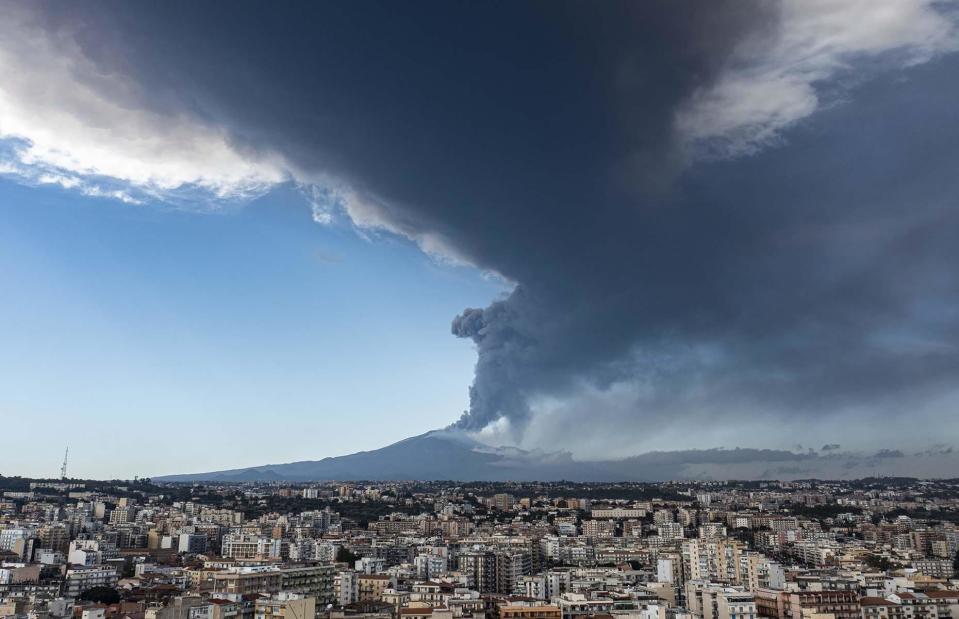
Fabrizio Villa/Getty Images
Activity continued in 2022 following a dramatic six-mile (9.5km) ash plume being blasted from the southeast crater on 21 February. The ancient port city of Catania – no stranger to eruptions – was covered in ash and the Catania–Fontanarossa Airport, also known as the Vincenzo Bellini Airport, was temporarily closed.
The airport was also closed after an eruption in August 2023. The latest seismic activity from what is now known as Europe's most active volcano, was on 1 December 2023. Residents said it lasted several hours.
Fagradalsfjall, Iceland
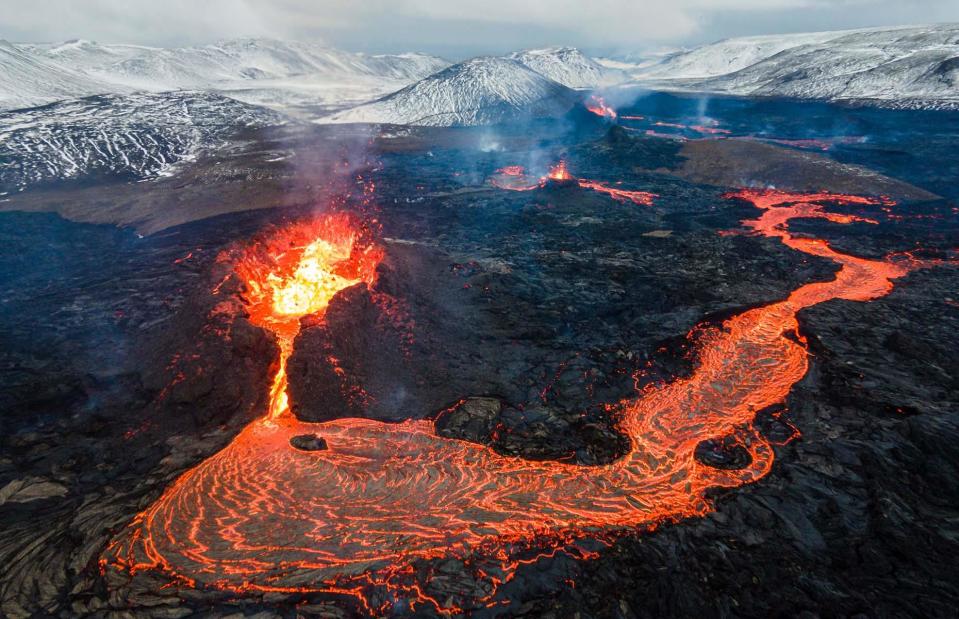
ImageBank4u/Shutterstock
Thanks to Iceland’s position on the Mid-Atlantic ridge where two tectonic plates meet, residents of the Nordic country see substantial volcanic activity. On 19 March 2021, Mount Fagradalsfjall volcano put on a fiery display – the first eruption in 800 years on the Reykjanes Peninsula in Iceland's southwest.
Fagradalsfjall, Iceland
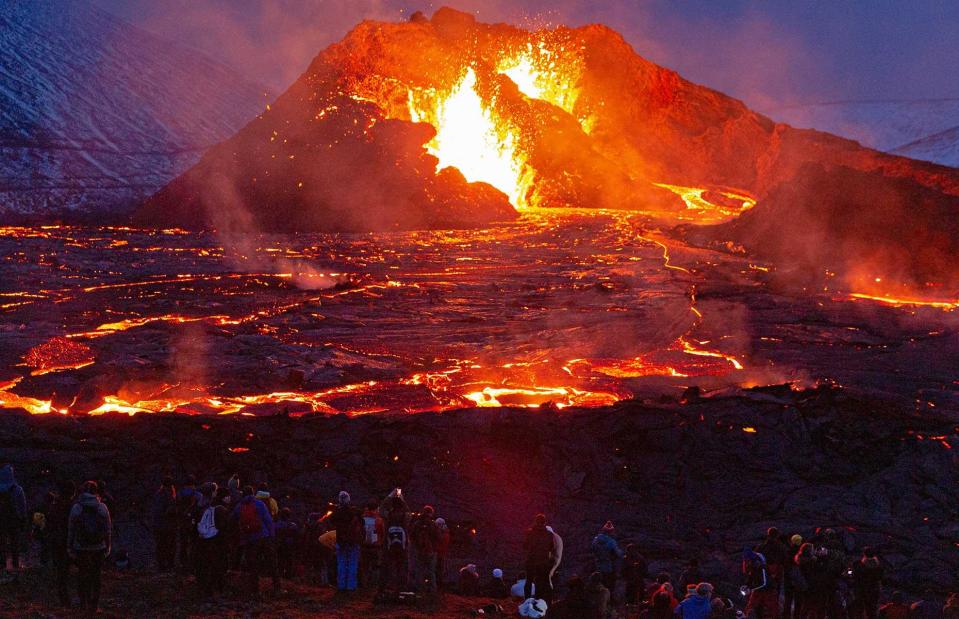
Sophia Groves/Getty Images
Located in the south, about an hour’s drive from Reykjavík, the spectacle drew hikers from miles around, keen to watch the lava flowing from the mountain’s two craters. Its steady flow showed no signs of being explosive or posing any threat.
Some enterprising (and presumably hungry) scientists were even spotted cooking sausages on the mountain. The only danger was due to gasses which, in some weather conditions, can build-up to life-threatening levels. The viewing area was temporarily closed as a precaution on 22 March 2021.
Fagradalsfjall, Iceland
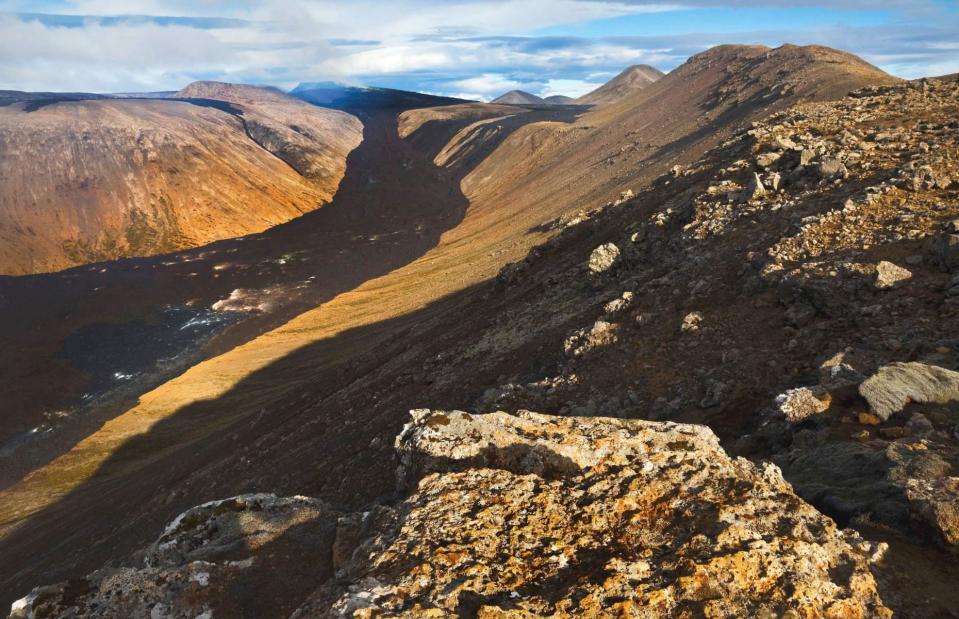
blickwinkel/S. Ziese/Alamy
The eruption rumbled on for around six months, attracting tourists and serving as the backdrop for a number of unusual activities including the filming of a music video and even a wedding. On 6 April 2021, spectators were evacuated when a helicopter spotted a third fissure forming a whole new lava field, then a month later, the spewing volcano lit up Reykjavik's night sky when fountains as tall as 1,500 feet (460m) were recorded.
Fagradalsfjall, Iceland
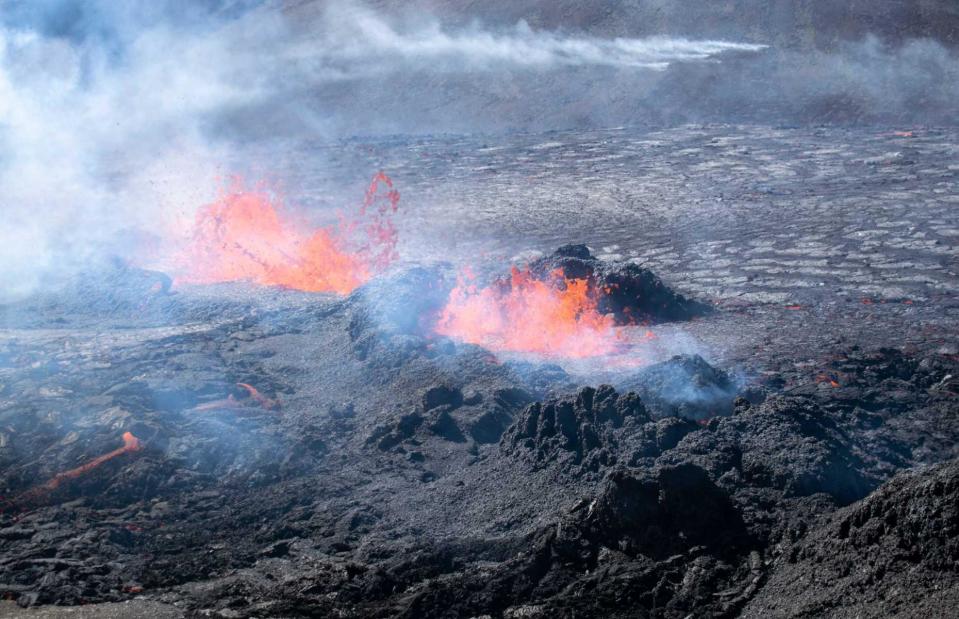
Jeremie Richard/Getty
Fagradalsfjall erupted again on 3 August 2022, after days of strong earthquakes in the area. The latest eruption began at a fissure only a few hundred feet away from last year’s spectacular spewing of lava.
Since the volcano has now erupted twice in less than a year, volcanologists believe this could mark the start of decades of occasional eruptions in Iceland's Reykjanes Peninsula. There is currently low threat to populated areas or critical infrastructure, but tourists and residents have been advised to avoid the area due to poisonous gasses.
Now take a look at beautiful but terrifying volcanoes captured on camera


